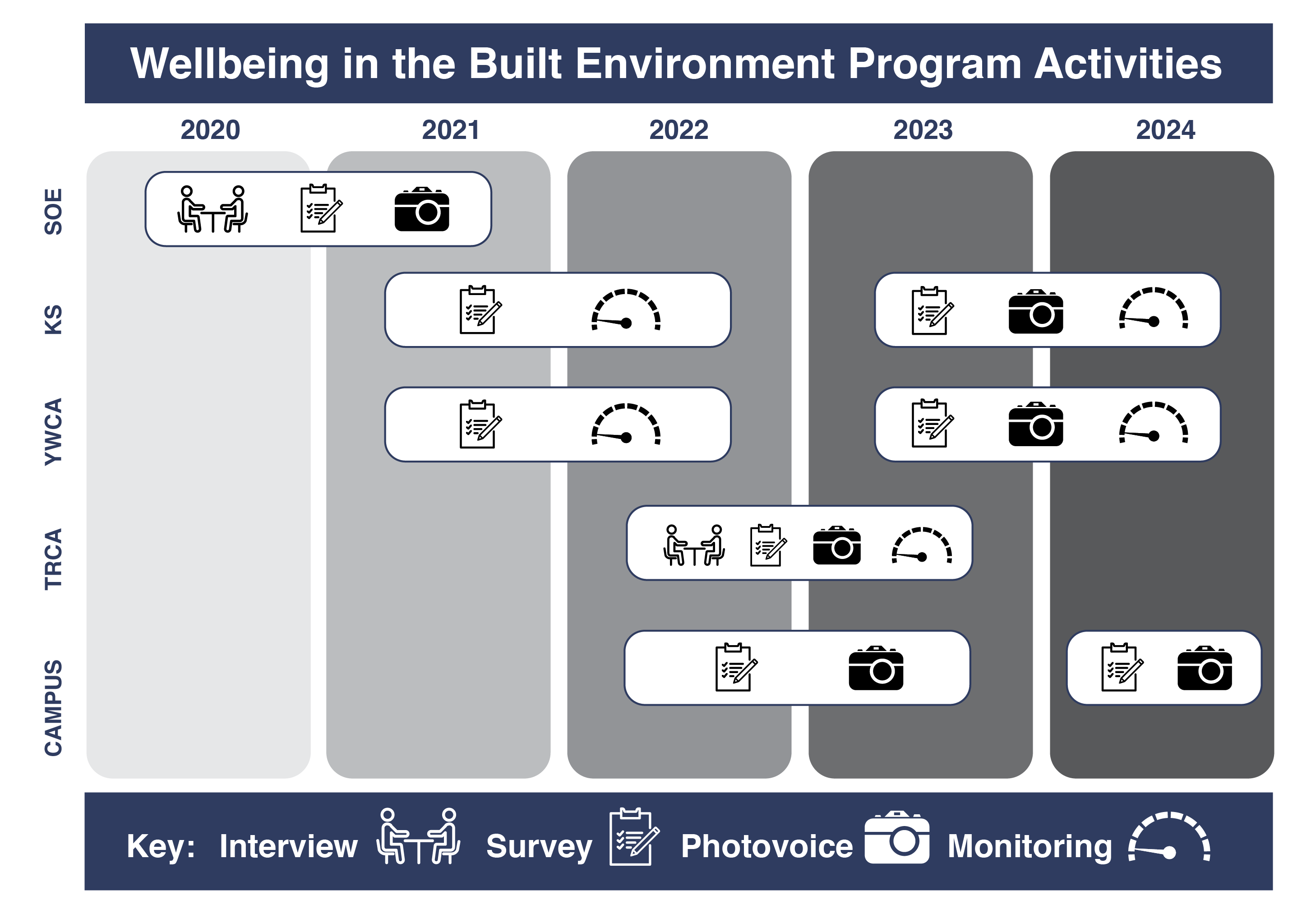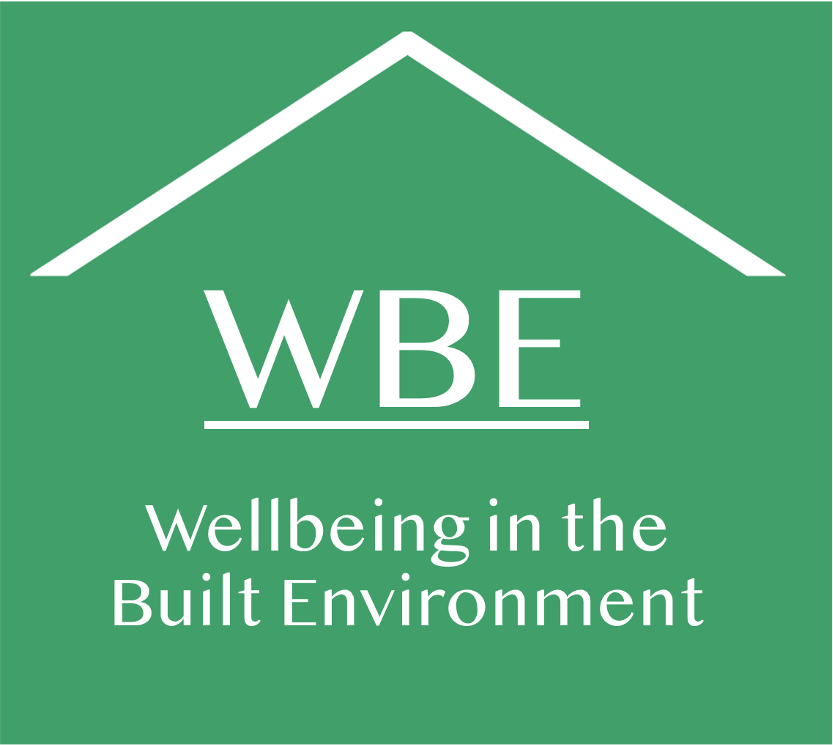PROJECTS

The WBE Program umbrella currently covers two joint, and two other related projects.
Practicing Wellbeing and Community Wellbeing in the Built Environment
Joint Projects (2020-2024, led by Dr.’s John Robinson and Marianne Touchie)
The “Practicing Wellbeing in the Built Environment” (PWBE) and the “Community Wellbeing in the Built Environment” (CWBE) are SSHRC-funded projects developing methods to assess and interpret the wellbeing of occupants across five different research sites buildings. We use qualitative and quantitative methods to understand how wellbeing might develop or be reduced as a result of daily activities in various built environment settings.
The research sites comprise several buildings, including the University of Toronto School of Environment pilot study, the TRCA (Toronto and Region Conservation Authority), and a University of Toronto residence (TBD), all in Toronto, plus the Ken Soble seniors’ social housing tower retrofit and the Putman Family YWCA in Hamilton, Ontario.
Campus Wellbeing (2022-2025, led by Dr. Marianne Touchie)
The “Wellbeing and the built environment: a new framework” project is funded by U of T’s Dean’s Strategic Fund. A three-year project, the research will build on the WBE work, to pilot a new assessment framework which integrates GHG emissions, life cycle costs and inhabitant wellbeing. The framework will be applied before and after three to five campus building retrofits. The ultimate goal of this transformative project is to assess campus building performance from a triple-bottom-line perspective including the linking of environmental, economic and wellbeing objectives.
The research sites for this project will begin with two University of Toronto residences (TBD). The methods developed in the Joint PWBE and CWBE projects will be used as a starting point for methods tailored to the campus population and environment.
CMHC Post Occupancy Evaluation Report (2021-2022, led by Dr. Marianne Touchie)
Post‐Occupancy Evaluations (POEs) are a tool used to assess how the actual performance of a building compares to the design intent as well as other building benchmarks including code‐compliant buildings. POEs involve data collection and assessment of both technical and human factors, depending on the design objectives of the particular building development. By identifying if and how design goals are met, the findings of a POE can then be useful for improving the performance of the subject building and, more broadly, for building developers, owners and operators in the design and operation of future buildings.
The Canada Mortgage and Housing Corporation (CMHC) has commissioned POEs on two high-performance buildings in the social housing sector located in Hamilton, Ontario. One is the Ken Soble Tower which has undergone a holistic retrofit in order to achieve the EnerPHit standard and the other is the YWCA, a new multi‐unit development targeting the Passive House certification standard.
Given the performance specifications and holistic approach used in the design of both of these buildings, CMHC wishes to document the technical performance of the buildings as well as resident perceptions of the indoor environmental quality, suitability of accessibility, social inclusion and other building livability features. The POEs will also assess innovative technologies and practices to better understand costs, benefits, implementation considerations, and the impact of design and construction decisions on operations and residents.
The research sites for the CMHC project include the Ken Soble seniors’ social housing tower retrofit, and Hamilton’s lPutman Family YWCA.
